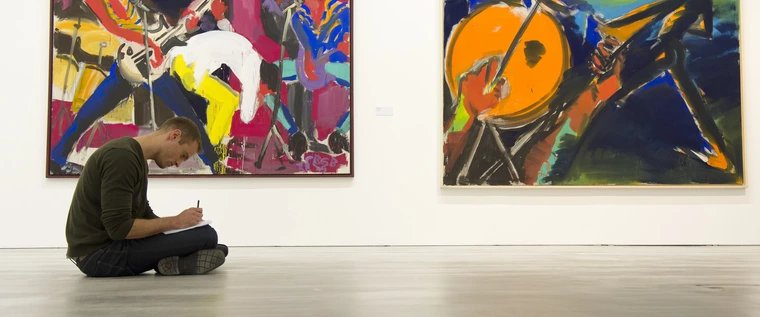
From Frederick the Great to Queen Luise
Frederick the Great paid special attention to him, and for Queen Luise it was one of her favourite places: the New Wing, which is rather inconspicuously attached to Charlottenburg Palace, contains numerous masterpieces of Baroque and Early Classicism inside.
The first independent residence of Frederick the Great Friedrich the Great commissioned the architect Georg Wenzeslaus von Knobelsdorff with the construction of his first independent residence when he took office in 1740. As a new wing, the building adjoins the Old Palace of his grandparents Sophie Charlotte and Friedrich I. to the east.
The representative entrance area in the middle of the elongated, two-storey building is highlighted by pairs of double columns, balconies and vase coronations. As in the Old Palace, the room layout corresponds to the baroque principle of the suite of rooms, the enfilade. The interior design is operated with great financial and artistic effort. After severe destruction in the Second World War, the magnificent Friderican banqueting halls - the White Hall, once used as a dining room, and the Golden Gallery, decorated with green stucco marble and filigree rococo decorations - as well as the King's first and second apartments have been restored and furnished, largely true to the original. Masterpieces of French painting, including Antoine Watteau's "Embarkation to Cythera" and the "Shop sign of the art dealer Gersaint" are among the main attractions. Above all, they inspire international visitors. In 1788 the nephew and successor of Frederick the Great, Frederick William II, had his nephew and successor of Frederick the Great's nephew set up a summer residence on the ground floor in the Chinese-Etruscan style and, from 1796 to 1797, the Early Classical winter chambers.
However, this suite was inhabited by his daughter-in-law Queen Luise, for whom Karl Friedrich Schinkel designed the elegant bedroom with furniture made of pear wood in 1810. Next to Sanssouci and the Royal Palace Unter den Linden, Charlottenburg was her favourite place. Her husband Friedrich Wilhelm III moved into rooms on the western ground floor, which once belonged to the apartment of the wife of Frederick II, Queen Elisabeth Christine. Today, important paintings and furniture from the monarch's possessions are on display here. Jacques-Louis David's monumental-heroically staged equestrian portrait of Napoleon Bonaparte and Franz Kruger's "Parade Unter den Linden" with the first half of the Biedermeier society marching past.
The Guard Regiment marks the beginning and end of the 43-year reign of Friedrich Wilhelm III's sculpture of the 19th century The new presentation of classicistic-romantic marble sculptures in the vestibule in front of the former royal residence is an ideal complement to this. The works, some of which were created in Rome by famous artists from the Berlin School of Sculpture, date back to antique models. In quiet grandeur, they await visitors in the re-opened New Wing.








